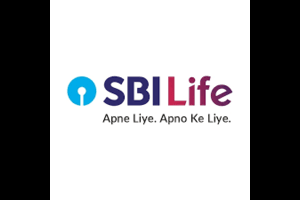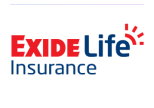Life Insurance Underwriting: A Simple Guide to the Process

Life insurance is a crucial tool for providing financial security to policyholders and their families in the event of their death. It helps cover expenses like education fees, debts, and daily living costs, ensuring that loved ones are financially protected. However, before issuing a life insurance policy, insurers need to assess the risks involved to determine appropriate premiums. This process, known as underwriting, ensures fair pricing based on an applicant’s risk profile.
Life insurance underwriting might seem complicated at first, but it’s a necessary part of ensuring that premiums and coverage are properly aligned with the applicant’s situation. This guide will help you understand the importance and process of underwriting in life insurance.
Table of Contents
Why is Underwriting Needed in Life Insurance?
Underwriting plays a critical role in the life insurance industry for several key reasons:
- Risk Assessment: Underwriters evaluate the applicant’s health, lifestyle, and other factors to assess the risk they pose to the insurer.
- Fair Premium Calculation: It ensures that premiums are fairly calculated based on the applicant’s risk profile.
- Financial Stability of Insurers: Underwriting helps prevent financial loss by avoiding underpriced policies or insuring high-risk individuals.
- Fraud Prevention: It helps insurers spot inconsistencies or patterns in applications, ensuring that claims are legitimate.
- Customizing Policies: Underwriting enables insurers to tailor policies to the specific needs and risks of the applicant.
The Life Insurance Underwriting Process
The underwriting process involves several steps to determine whether an applicant qualifies for insurance and what their premium rate will be:
- Application Submission: The applicant submits basic personal information, including medical history, occupation, and lifestyle details.
- Medical Examination: Depending on the policy, a medical exam may be required to assess the applicant's current health.
- Risk Classification: Based on the provided information, the applicant is categorized into a risk class (preferred, standard, or sub-standard), which affects the premium rate and policy details.
- Data Verification: Insurers verify the information provided by the applicant, checking medical history reports and other relevant data.
- Final Decision: The underwriter approves or denies the application based on the risk assessment.
- Policy Issuance: If approved, the insurer issues the policy with the agreed premium rate and terms.
Types of Life Insurance Underwriting
There are several types of underwriting methods used by insurers, each with its own process and requirements:
- Medical Underwriting: This is the traditional method, requiring a medical exam to evaluate the applicant's health and lifestyle. It’s ideal for those seeking high coverage and offers lower premiums for healthy individuals.
- Simplified Issue Underwriting: This type streamlines the process by asking only a few health-related questions, skipping medical exams. It’s faster but offers lower coverage amounts.
- Guaranteed Issue Underwriting: Also known as no-medical-exam insurance, this is designed for individuals with higher health risks or older age. It doesn’t require a medical exam but usually comes with higher premiums and lower coverage amounts.
- Financial Underwriting: This method evaluates an applicant's financial situation to determine how much coverage they can afford. Higher financial risk results in higher premiums.
- Group Underwriting: Common in employer-sponsored life insurance, this method assesses risk for the entire group. Premiums are typically lower, but coverage ends when the policyholder leaves the company.
- Accelerated Underwriting: This newer method uses technology and predictive analysis to assess risk quickly without requiring a medical exam. It’s ideal for those looking for faster approval.
Challenges in the Underwriting Process
Several issues can arise during the underwriting process that may delay or affect an applicant’s approval:
- Incomplete or Inaccurate Information: Missing or falsified details can lead to policy cancellation after underwriting is completed.
- Health Issues: Pre-existing conditions or high-risk health factors may lead to higher premiums or policy rejection.
- Processing Delays: Medical exams and application reviews can take time, causing delays in approval.
- Data Discrepancies: Inconsistencies found during verification may result in delays or require resubmission of the application.
How to Improve Your Chances of Approval in Life Insurance Underwriting
To increase your chances of a smooth approval process and secure fair coverage, follow these tips:
- Provide Accurate Information: Be honest and thorough in your application, especially about your medical history and lifestyle habits.
- Maintain a Healthy Lifestyle: Avoid smoking, limit alcohol consumption, exercise regularly, and eat a balanced diet to reduce health risks.
- Review Your Application: Double-check all the information before submitting to ensure accuracy and avoid errors that could delay the process.
- Consult an Insurance Professional: A knowledgeable agent can guide you through the underwriting process, helping you choose the right policy and ensuring you get a fair premium rate.
- Consider Alternative Policies: If you have health concerns, consider simplified or guaranteed issue policies, but be aware they may come with higher premiums.
The underwriting process is crucial in life insurance as it helps ensure that policies are tailored to each individual’s risk profile. By understanding the steps involved and managing controllable factors, you can improve your chances of securing the coverage you need at a reasonable rate. Whether you're applying for a traditional or simplified policy, taking proactive steps can help you navigate underwriting more efficiently.




























































